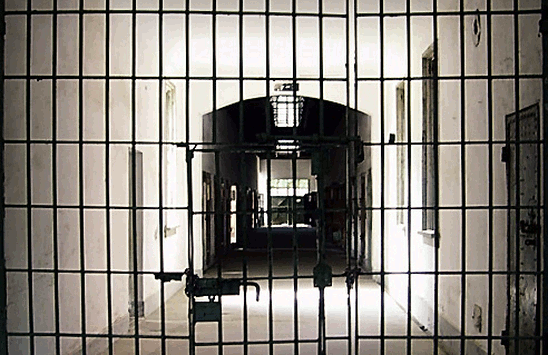
(SNN) - Controversy arose this week over the Michael Dunn case, often referred to as the "Florida loud music killing case." Briefly, Dunn, a White male, parked next to an SUV in which some Black teenagers sat listening to loud music, described by Dunn as "rap crap" and "thug" music. A disagreement ensued and Dunn, fired a 9-millimeter legal handgun into the SUV and continued firing as the SUV left. The gunfire struck Jordan Davis, one of the SUV's passengers, three times causing his death. According to the LA Times, Dunn thought he saw a shotgun in the SUV and fired because he felt threatened; however, no gun was found in the SUV. Jury members' disagreement over whether Dunn was guilty of first-degree murder resulted in a mistrial on that charge, though he was convicted on three counts of second-degree murder. The disagreement centered on whether Dunn's self-defense plea applied. Read what one of the Jurors had to say here.
One is reminded of the Trayvon Martin-George Zimmerman case in which Zimmerman (White and Peruvian) shot and killed Martin (Black) and was later acquitted. You can read about that case here.
Perhaps less well known is the case of Black American Marissa Alexander who fired a warning shot at her husband because she felt threatened (no one was harmed) and was subsequently sentenced to 20 years in prison. Read more about that here.
Much of the controversy revolves around "Stand Your Ground laws" and whether they excuse outright murder. To be fair, according to the LA Times, neither the Zimmerman nor Dunn legal team utilized these laws as a defense.
But there is something deeper going on here--the question of whether Black Americans are still negatively stereotyped and whether even the laws of this land are unfairly applied regarding them; in other words, whether we still have a long way to go to end racism. Clearly the answer is yes.
If anything good can come out of the Dunn case, it is a national dialogue about racism.
Some of that dialogue began Sunday when Twitter users responded to the Dunn case with poignancy using the hash tag "DangerousBlackKids," in which people posted pictures of adorable young Black and mixed-race children and young adults with sometimes humorously sarcastic messages about how stereotypically dangerous the kids in the photos are. Yet, as one Twitter respondent said, "The #dangerousblackkids tag is humanizing and important. But it's enraging that we black people STILL have to PROVE our basic humanity."
Yes, and it's also sad.
Negative stereotyping (dehumanizing) is first a psychological violence perpetrated on a perceived outsider group that ultimately leads to a more tangible violence of one sort or another. It requires educating to begin to eradicate.
Many Whites--particularly middle class and wealthy whites--live and work in environments largely segregated from meaningful interaction with other races or classes. Often stereotypes go unchallenged because people are not conscious of holding them, or are unaware that the stereotypes they hold are stereotypes, and are unaware of the violence they perpetrate by holding onto such stereotypes. This is a two-way street, though generally more dangerous for those less socially entitled.
It is regrettable that the burden of educating falls largely on those most adversely affected by this inequality, but it is always the case--just ask women's rights activists. The good news is things are changing. Not all White Americans need to be convinced Black Americans still largely have a raw deal. Many are ready and willing to challenge their own and other's preconceptions.
Here's hoping the Dunn case gives all of us the impetus to continue this dialogue and to make real advances toward a substantive equality and toward the day when no one will be considered an outsider. One thing is certain; the Dunn case is not over yet.
Maye Ralston is an opinion columnist for The Sage a blog contributor and member of the Midwest Writers Workshop Planning Committee. Her blog can be found at www.MayeRalston.net.
Photo: Sample prison doors, Some rights reserved by kIM DARam flickr photostream, The Sage nor this article endorsed, The original photo can be found here.
More Satire News
-
Dogs, Drugs, and Forgiveness
Wednesday, October 25, 2017
(SNN) Oh my goodness. Just heard that the four time champion of Alaska's Iditarod may have given his dogs drugs to enhance their speed. Now, I wonder if my former Golden Labrador dog Charlie (Charles Worthington ...
-
Tragedy Strikes Sullivan's Pond
Monday, August 14, 2017
(SNN) After being sent yesterday by The Sage News Network to cover a memorial held for two geese that had been tragically run over, I sit at home today enjoying delicious foie gras on crackers. The event was held ...
-
How to Make Love in a Canoe
Monday, July 03, 2017
One night a young amorous Sioux Had a date with a maiden he knioux; The coroner found The couple had drowned Making love in a leaky canoe -Anonymous (SNN) The French gave the world a kiss, the Spanish provided an ...
-
North Korea Axes Public Executions
Tuesday, June 20, 2017
(SNN) Pyongyang, North Korea –In response to a major shift in US Foreign Policy and rumors of a possible state visit by US President Donald Trump, North Korean authorities have been ordered to curtail public trials ...
-
Senior Duffers Rules of Golf
Sunday, June 18, 2017
(SNN) It’s Spring and the thoughts of masochists turn to golf. When people ask me if I play golf, I respond: "I play a game similar to golf, only with more lurching about and travel." Actually there's nothing similar ...
-
It (Usually) Never Rains In California
Thursday, February 09, 2017
(SNN) When I was notified I had won a prize for rainmaking I was gob-smacked while trying to close my umbrella. The last one to win that prestigious award was Burt Lancaster whom I’m often mistaken for without my ...
-
Snubs and Flubs at the Oscar Nominations
Wednesday, January 25, 2017
11. Worse singing by a nominated Actress: Meryl Streep, in “Florence Foster Jenkins.” (This is her second nomination in this category. She won previously for “Mama Mia”) 10. Most academy award nominations for ...
-
My Aching Back and the Magical Little Christmas Tree
Wednesday, December 21, 2016
(SNN) We moved from Washington DC to Los Angeles CA in the Summer of 1983, lock, stock, dog and our two kids—John, almost eight, and Andrew almost four. They adjusted to their new environs as best they could. Come ...
-
Road-Tested and Ready
Thursday, December 08, 2016
(SNN) I don’t list Automotive Writer on my resume, but my need for new transportation has led me to a new car search. I went to a couple of recent auto shows, road-tested several models—some cars too—and did my ...
-
Trump: Worse Than a Poke in the Knee with a Sharp Scalpel?
Saturday, November 19, 2016
(SNN) I am a glutton for punishment. That’s why I scheduled a visit with an Osteopathic Surgeon the day after the Presidential election. I figured if worst came to worst at the polls, the prospeceet of major surgery ...

